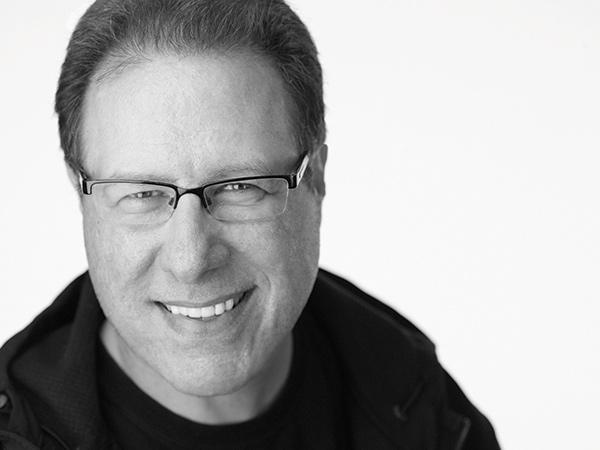Get Your Photo Questions Answered By a Pro: Scott Kelby Offers His Advice & Knowledge

Q. Re: your answer to the question about solving noise problems in the writer’s wedding shots in the February 2017 issue. You mentioned Photoshop, Lightroom, and Nik for noise reduction, but left out the best noise reduction software I’ve ever used—DxO’s OpticsPro 11. I had great night shots of lava flowing into the sea off Hawaii that were unusable because of noise, but OpticsPro 11 Prime worked wonders.
A. I agree—DxO’s OpticsPro 11’s noise reduction is really pretty amazing, and probably the best in its class. However, there’s only one problem with it—you have to buy it. The solutions I offered, using his current version of Photoshop or Lightroom, or downloading the free Nik Collection, don’t cost anything. But if you’re willing to invest in noise reduction, DxO definitely has a leg up on just about everybody. Thanks for catching that.
Q. I purchased a Nikon D750 in December 2015. A year later, it developed a nasty little problem: I press the shutter to take a picture, the camera blinks and then shuts off! As a workaround, I turn the camera off, sometimes several times, and it will regain its intellect. I sent it to Nikon Repair Services and it was totally overhauled. A week later while out shooting this happened again. I’m very disappointed but also apprehensive about my investment. Is this camera prone to short-circuiting? How do I have Nikon do a permanent fix or replace it?
A. The D750 had one shutter problem, and then a second problem cropped up (the one you’re experiencing). Nikon has had two recalls to fix the shutter problems so far. Here’s what I’d do: take a video with your phone of the problem (show it locking up and such) and e-mail it to Nikon. They’ve seen this before and chances are you’ll be sending it back in for a fix on their dime. When they originally fixed your shutter, they probably replaced the original D750 shutter problem, but not the problem you’re currently experiencing.
Q. I had a calendar of a famous mural with the mural photographed in six sections on six pages. I photographed it on film about 35 years ago. Recently I scanned the six negatives with the intention to join them in Photoshop. While the scans are reasonably sharp, every section varies in color. For example, the sky is light in one section or the color is a different shade, hence composite of these sections does not come out well. Also, Photoshop has let me join only four sections. How can I color match the sections accurately (in Photoshop or Lightroom) and is there a limit to the number of sections that can be joined?
A. While I’m not 100 percent sure I have the answer, I do have something you can try, and it will either work brilliantly or not at all. In Photoshop, open the six sections, then click on one of the photos whose color doesn’t look right. Now go under the Image menu, under Adjustments, and choose “Match Color.” When the dialog box opens, near the bottom under “Source,” choose the name of the photo (of the six) that looks closest to being the right color. It will apply the overall color tone from that good color photo to the bad color photo you have open. You’ll have to do this for each of the remaining four pieces, because now, hopefully, two of them look very close in color. Depending on the images, this will either work awesomely or not at all, but without digging deep into curves and matching color values, this is at least a reasonable thing to try (and it’s saved my butt more than once).
Q. What risks could I encounter using the same SD card across multiple gear systems? I may use the same one on my Canon DSLR, my Sony point-and-shoot, and my Panasonic HD Camcorder.
A. There’s only one real risk, but it’s a big one—your SD card gets corrupted and you lose your images. I always recommend formatting your memory card for the camera you’re shooting with if you switch between brands. I’ll often use the same card on a Canon EOS 5D Mark III and a Canon EOS-1D X, but if I picked up a Fuji X-T2 I would definitely reformat the card for that camera without a doubt. Nothing is more heartbreaking than having a card get corrupted. And once it happens to you, you get really disciplined about stuff like formatting.
Q. Juggling a lens cap is no fun when traveling. As a result, I default to my Sony Cyber-shot DSC-RX100 II, which has a wonderful automatic lens cover. However, this camera has many limitations, including a maximum equivalent focal length of 100mm. The automatic lens cover is a really big deal for me. Are there any other cameras with automatic lens covers that would make good travel cameras?
A. This is a tough one because getting past that 100mm in a high-quality compact camera (with an automatic lens cover) is tough. I like the Canon PowerShot GX 7 Mark II, which has an automatic lens cap, but it’s tapped out at 100mm, too. I feel the same way about lens caps—I can’t stand messing with them, and missing shots because of them, and losing them (don’t get me started). So, here’s my recommendation: buy a camera with a longer zoom and simply leave the lens cap off. Put a rubber lens hood on the end if you like, and you never have to worry about it again. I only put my lens cap on when I put my camera back in my camera bag. This way I’m always ready to shoot and I never lose one or have to mess with one. Also, I’ve never scratched a lens, even when shooting on the sidelines or at sporting events where I’m really rough on my gear. Give it a try—it’s very freeing.
Scott Kelby is a photographer, Photoshop Guy, award-winning author of more than 50 books, and CEO of KelbyOne, an online education community dedicated to helping photographers take the kinds of images they’ve always dreamed of. You can learn more about Scott at his daily blog (scottkelby.com), or follow him on Twitter: @scottkelby.
Editor’s Note: Ask a Pro is a Q&A column from professional photographer, writer, and educator Scott Kelby. Scott is here to answer all your photography-related questions, so if you have something you’d like to know, e-mail him at editorial@shutterbug.com (with “For Scott Kelby” as the subject line) and your query could be featured in the next edition of Ask a Pro.
- Log in or register to post comments

















































